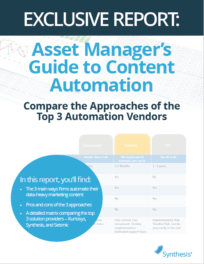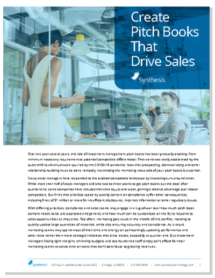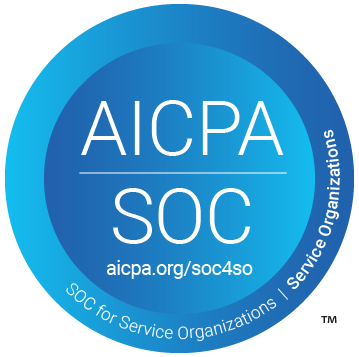Avoiding Failure: 3 Reasons Content Automation Implementations Fail at Investment Companies

When making an investment in marketing or sales technology, getting the implementation right is critical.
A recent article in Fund Technology states that third-parties are increasingly prevalent, but onboarding and vetting can be taxing. The decision to implement new technology adds short-term complexity and creates both financial and reputational risk.
No matter where you sit in your marketing or sales organization, chances are you’ve been exposed to the enormous undertaking of a marketing tech implementation. CRMs, marketing automation, and content management systems are critical and commonplace. Problematic Martech implementations often stem from a lack of time, budget, or resources. When an organization decides to minimize time, costs, and efforts at the outset, they limit their ability to actually achieve their goals.
This is very similar to the mistake many of us make in our personal lives regarding furniture purchases. You need a sofa, you have a spot for the sofa, but you really don’t want to spend a lot of money on a really good sofa. You then spend the next 10 years sitting on an uncomfortable and possibly ugly piece of furniture because it’s there and it feels like a waste and a lot of energy to try to get rid of it and buy something nice. I think most of us have some version of this story in our past and thus it’s a great analogy for the business decision of why to invest in the right tools in our professional lives.
The same problems arise when implementing content automation. Content automation platforms dramatically reduce the time spent creating data-heavy fact sheets, commentaries, and sales presentations — but getting the solution implemented can be resource-intensive. When many data sources, templates, compliance rules, and distribution strategies come into play, it’s best to engage a professional who has experience running successful implementations for investment companies. Taking on a ‘DIY’ implementation can be problematic for many firms.
Without a solid implementation strategy and expertise, you risk:
- Missing critical deadlines and go-live dates.
- Incurring budget overruns and/or implementing a half-baked solution
- Delivering a disjointed solution that doesn’t integrate with key systems and processes
- Leaving the hard part of the business solution untended and only dealing with the easy stuff
To avoid these issues, it’s important to focus intently on the implementation strategy during your evaluation. Here are are three areas that are absolutely critical to the success of a data-heavy content automation solution:
#1 – Data Integration
Last year, we worked with an asset manager who decided to automate their fact sheets using a PowerPoint-based sales enablement platform. They felt if their team had more control of the process in-house that they would ultimately save more money. They started the implementation with this PowerPoint-based solution provider early last year, yet after 12 months, many of their fact sheets are still not automated. I’ve seen this happen over and over, as firms underestimate what it takes to integrate and map the data. There are certain automation platforms that aren’t well-suited for automating data-heavy documents. PowerPoint-based solutions can handle simple data integrations, but there are certain types of fact sheets (fixed Income products, or funds-of-funds for example), that are notoriously difficult because the data is not straightforward. Unless you’re using a platform that has the proven ability to ingest and render more complex fact sheet data, you risk having to pay a consultant to figure it out, or forgo automating these documents altogether.
Problems with the data integration are common with DIY solutions, especially ones that aren’t truly automation platforms. The one mentioned above is actually a sales enablement platform, not an automation platform at all. If a software provider claims they can ingest data in any format and automate financial documents and reports, you should make them prove it, at scale, before you engage much further. Often, they will force your data into a strict format that only their systems can read causing you more manual effort. Call their investment company clients and find out if they’ve been able to successfully automate all of their documents with the platform or if they’ve had to trim their ambitions. – Ask them how they integrated the data, how long it took, and what problems arose.
Free Resource: Guide to Integrating Investment Data for Content Automation
#2 – Template Conversion
It may sound like a minor detail, but the template conversion can end up being a huge expense if you’re not careful. In a recent podcast, Synthesis CEO John Toepfer spoke to Terry McDougall, Founder of Bright Beam Consulting and former Head of U.S. Marketing for a large global bank and asset manager. She offered her first-hand account of converting her company’s InDesign templates to PowerPoint.
The firm had purchased a PowerPoint-based sales enablement platform to automate and distribute their factsheets and pitchbooks. They needed to convert their InDesign templates to PowerPoint in order to automate their 100+ fact sheets. She described the painful conversion process. “It’s like taking a Ferrari and turning it into a Yugo,” she said half-joking. She said her team found out the hard way that you can’t expect to produce print-quality content out of an application like PowerPoint. There are many limitations with regard to formatting, data integration, colors, fonts, and the list goes on. Fully understanding the process of template conversion will help you determine how much time and money it will take to complete this part of the implementation. It’s a smart idea to ask for samples of the final PDF output and examine them closely for quality. PDFs produced from vector-based programs create beautiful, flawless output with quality typography that looks great in print or on a screen. Microsoft-based solutions produce output that is not suitable for commercial-quality printing. The documents might even be fuzzy when viewed on a computer screen or mobile device. Many financial firms pride themselves on a polished brand image. If you’re a firm that cares deeply about brand consistency and quality, carefully evaluate the quality of the final output before you decide on an automation platform.
#3 – Integration with Sales and Compliance Systems
Another common issue is that marketing teams often go searching for automation solutions in a silo, and then bring in other stakeholders too late. To avoid any issues down the road, we advise our clients to engage stakeholders from Sales, Compliance, and other relevant groups very early in the conversation. Firms who engage multiple departments see a much higher success rate with implementation and a lower total cost of ownership (TCO). Bringing all relevant parties together early in the process will eliminate technological redundancy and improve overall efficiency of the final solution.
Here’s a great example. We onboarded a new client last year who originally came to us with a fact sheet problem. After a thorough discussion of their needs, they realized that our solution could handle multiple needs across departments, not just fact sheet production. In the end, they decided to prioritize a sales enablement initiative before automating their factsheets. After they fleshed out their strategy, they ended up with a fully integrated and compliant sales enablement solution that’s integrated with their compliance system and CRM. By guiding them through the big-picture strategy, we helped them successfully integrate four critical software systems used by three different business units. The final solution provides a seamless workflow between marketing, compliance, and distribution teams, allowing salespeople to quickly produce customer-centric and compliant presentations. The final presentation decks are tracked in Salesforce and recorded with an approval code in their compliance system. This holistic approach has helped them significantly improve content production efficiency, compliance, and sales effectiveness. And, when they’re ready we will start the process to automate the fact sheets off of the same powerful platform.
Read the whole case study here: Sales Enablement for Retirement Plans: Where Customization Meets Compliance
The Main Takeaway
Success is defined not only by hitting deadlines and budgets but also by implementing solutions that maximize your investment. By focusing on the three elements above, you can avoid running into issues like missed deadlines, budget overruns, data quality issues, and low employee morale. We always advise our clients to consider the value of professional implementation. A solution that has been implemented by an expert minimizes your risk and maximizes your ROI. An implementation team well-versed in handling complicated data scenarios, template conversion, and integration strategies will save your organization time, money, and the extra hassle.
Here are some related resources that might interest you:






 Compare the Top 3 Finserv Content Automation Vendors [White paper]
Compare the Top 3 Finserv Content Automation Vendors [White paper] Create Pitchbooks the Drive Sales [White paper]
Create Pitchbooks the Drive Sales [White paper] Build vs. Buy: Should Your Financial Services Firm Outsource or Insource Marketing Technology? [White paper]
Build vs. Buy: Should Your Financial Services Firm Outsource or Insource Marketing Technology? [White paper]  10 Tips for Rebranding your Fund Marketing Documents [White paper]
10 Tips for Rebranding your Fund Marketing Documents [White paper]




